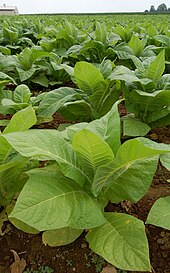
The tobacco industry comprises those persons and companies who are engaged in the growth, preparation for sale, shipment, advertisement, and distribution of tobacco and tobacco-related products. It is a global industry; tobacco can grow in any warm, moist environment, which means it can be farmed on all continents except Antarctica.

The R. J. Reynolds Tobacco Company (RJR) is an American tobacco manufacturing company based in Winston-Salem, North Carolina, and headquartered at the RJR Plaza Building. Founded by R. J. Reynolds in 1875, it is the second-largest tobacco company in the United States. The company is a wholly owned subsidiary of Reynolds American, after merging with the U.S. operations of British American Tobacco in 2004.

Edgerton is a city in Rock County and partly in Dane County in the U.S. state of Wisconsin. The population was 5,945 at the 2020 census. Of this, 5,799 were in Rock County, and 146 were in Dane County. Known locally as "Tobacco City U.S.A.," because of the importance of tobacco growing in the region, Edgerton continues to be a center for the declining tobacco industry in the area.

The American Tobacco Company was a tobacco company founded in 1890 by J. B. Duke through a merger between a number of U.S. tobacco manufacturers including Allen and Ginter and Goodwin & Company. The company was one of the original 12 members of the Dow Jones Industrial Average in 1896. The American Tobacco Company dominated the industry by acquiring the Lucky Strike Company and over 200 other rival firms. Federal Antitrust action begun in 1907 broke the company into several major companies in 1911.

Imperial Brands plc is a British multinational tobacco company headquartered in London and Bristol, England. It is the world's fourth-largest international cigarette company measured by market share after Philip Morris International, British American Tobacco and Japan Tobacco and the world's largest producer of fine-cut tobacco and tobacco papers.

W.D. & H.O. Wills was a British tobacco manufacturing company formed in Bristol, England. It was the first British company to mass-produce cigarettes. It was one of the 13 founding companies of the Imperial Tobacco Company ; these firms became branches, or divisions, of the new combine and included John Player & Sons.
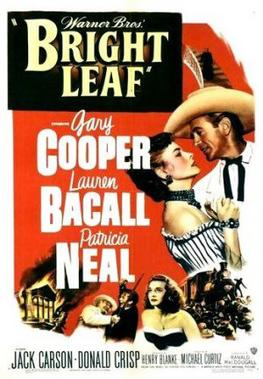
Bright Leaf is a 1950 American Drama Western film directed by Michael Curtiz and starring Gary Cooper, Lauren Bacall and Patricia Neal. It is adapted from the 1949 novel of the same name by Foster Fitz-Simons. The title comes from the type of tobacco grown in North Carolina after the American Civil War. According to Bright Leaves, a 2003 documentary film by Ross McElwee, the plot is loosely based on the rivalry of tobacco tycoons Washington Duke and John Harvey McElwee, the filmmaker's great-grandfather.

Lorillard Tobacco Company was an American tobacco company that marketed cigarettes under the brand names Newport, Maverick, Old Gold, Kent, True, Satin, and Max. The company had two operating segments: cigarettes and electronic cigarettes.
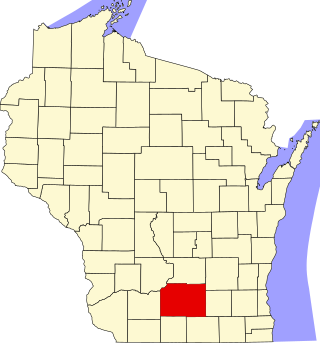
This is a list of the National Register of Historic Places listings in Dane County, Wisconsin. It aims to provide a comprehensive listing of buildings, sites, structures, districts, and objects in Dane County, Wisconsin listed on the National Register of Historic Places.

Claude and Starck was an architectural firm in Madison, Wisconsin, at the turn of the twentieth century. The firm was a partnership of Louis W. Claude (1868-1951) and Edward F. Starck (1868-1947). Established in 1896, the firm dissolved in 1928. The firm designed over 175 buildings in Madison.

A menthol cigarette is a cigarette infused with the compound menthol which imparts a “minty” flavor to the smoke. Menthol also decreases irritant sensations from nicotine by desensitizing receptors, making smoking feel less harsh compared to regular cigarettes. Some studies have suggested that they are more addictive. Menthol cigarettes are just as hard to quit and are just as harmful as regular cigarettes.

The J. S. Halpine Tobacco Warehouse is a historic tobacco warehouse at West and Mill Streets in New Milford, Connecticut. Built c. 1900–02 for one of the area's leading tobacco processors, it is a reminder of tobacco's historic economic importance in northwestern Connecticut. The building was listed on the National Register of Historic Places in 1982. It has been converted to residential use.
Frost & Granger was an American architectural partnership from 1898 to 1910 of brothers-in-law Charles Sumner Frost (1856–1931) and Alfred Hoyt Granger (1867–1939). Frost and Granger were known for their designs of train stations and terminals, including the now-demolished Chicago and North Western Terminal, in Chicago. The firm designed several residences in Hyde Park, Illinois, and many other buildings. Several of their buildings are listed on the U.S. National Register of Historic Places.

Smoking in the United Kingdom involves the consumption of combustible cigarettes and other forms of tobacco in the United Kingdom, as well as the history of the tobacco industry, together with government regulation and medical issues.

Columbia Wagon Works, also known as Colonial Wagon Company, is a historic wagon factory complex located at Columbia in Lancaster County, Pennsylvania. The complex was built between 1889 and 1920, and includes seven contributing buildings. They are rectangular brick factory buildings with heavy timber frame construction. Six of the buildings are arranged in an "H"-shape. The buildings range in height from one to 3 1/2-stories. The wagon company closed in 1926, after which the buildings housed a tobacco warehouse operated by the American Cigarette & Cigar Company and produce warehouses. Between 1994 and 1996, the complex was converted to house 60 apartments.

The B.F. Good & Company Leaf Tobacco Warehouse, also known as the P. Lorillard Company Tobacco Warehouse, is an historic tobacco warehouse which is located in Lancaster, Lancaster County, Pennsylvania.
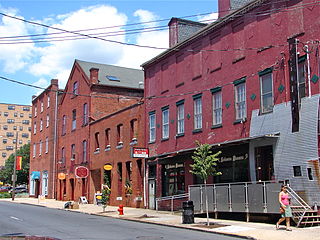
The Teller Brothers–Reed Tobacco Historic District is an historic, American cigar factory and tobacco warehouse complex and national historic district located in Lancaster, Lancaster County, Pennsylvania.

The American Tobacco Historic District is a historic tobacco factory complex and national historic district located in Durham, Durham County, North Carolina. The district encompasses 14 contributing buildings and three contributing structures built by the American Tobacco Company and its predecessors and successors from 1874 to the 1950s. Located in the district is the separately listed Italianate style W. T. Blackwell and Company building. Other notable contributing resources are the Romanesque Revival style Hill Warehouse (1900), Washington Warehouse (1902–07), the Lucky Strike Building (1901–02), and Reed Warehouse; Noell Building ; Power Plant and Engine House (1929–39); and the Art Moderne style Fowler (1939) Strickland (1946) and Crowe (1953) buildings.
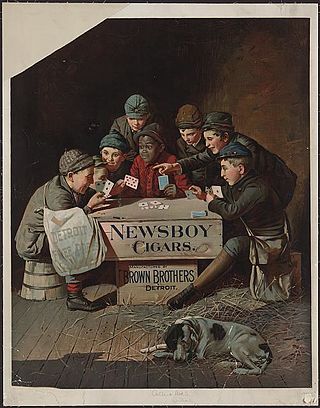
Brown Brothers Tobacco Company was located at 119 State Street in Detroit. The building was built for brothers, Robert Hamilton Brown and John Brown who founded a cigar manufacturing business which was, at one time, the largest cigar factory under one roof in the world. Brown Brothers were known for the following cigar brands: Newsboys, Cremo, Fontella, Carmencita, Evangeline and Detroit Free Press.



